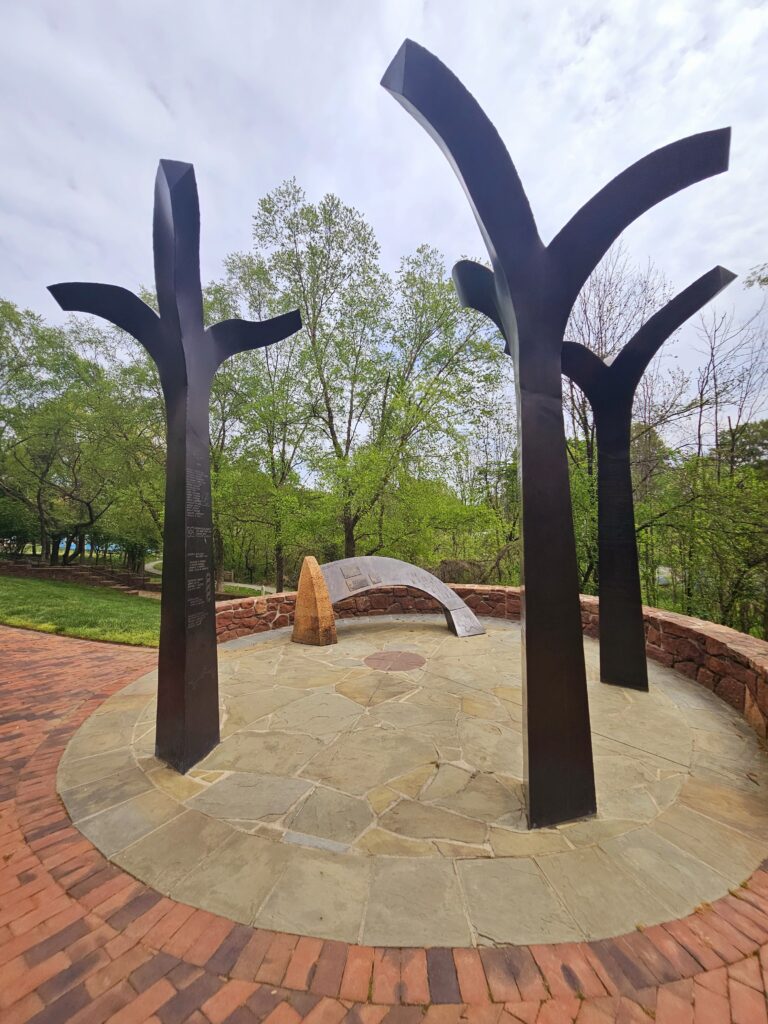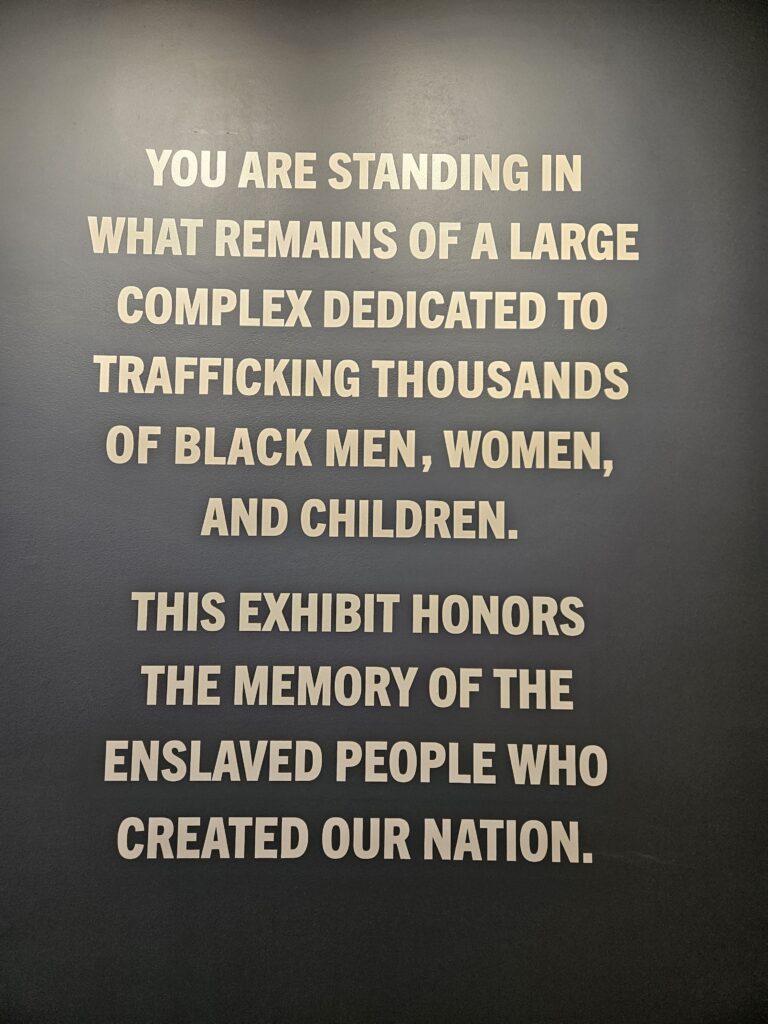I often ignore the historical markers in Old Town Alexandria because when I looked at them while I lived there, I found that they were usually about the Lee family. However, I wanted something different than mobile history sites offered by the City of Alexandria, so I typed by zip code into Clio and found the African American History of Alexandria walking tour. Although not always on purpose, I did not visit the stops on the tour in order.
I took the metro to King Street on a Sunday morning and set off to find the first destination, Alexandria African American Heritage Park. However, I unintentionally encountered the second stop on the walking tour first, Bruin’s Slave Jail and the statue of Emily and Mary Edmonson. This walking tour must assume that one is driving and then parking a car at the African American Heritage Park. I have concluded that is the only way to encounter it first. What was Bruin’s Slave Jail is now a private building on a major intersection where people wait to cross the street to get to Whole Foods from the metro. The statue of the Edmondson sisters is in a little pathway next to and slightly behind the building. The historical information about the sisters is on a wall behind the statue. I am not sure I ever walked up to it before.
Users supplied the historical information for each stop, but the articles cite official government websites and articles. The tour was last updated in 2017, and since then, there has been a significant shift in the language used about Black history. This difference was most apparent in the article about the Freedom House Museum versus visiting the Freedom House Museum. It closed for a few years and reopened last year. During that time, it became a city museum, and all the language was updated to reflect the dignity of enslaved people and condemn enslavers. The article lists the basement of Freedom House as one of its most powerful and moving exhibits, but after reopening last year, the basement is closed to the public. However, the museum is still powerful and moving. The exhibits on the second floor tell 300 years of history using the stories of individuals alongside portraits painted by students at the local community college.
The tour featured a variety of sites, including sites connected to the slave trade, museums, churches, cemeteries, libraries, schoolhouses, meeting places, and houses where notable Black Alexandrians lived. Although I moved to Alexandria in 2012, I only visit one of these 13 historic places regularly. The Little Theatre of Alexandria has used Alexandria Academy as a rehearsal and classroom space for many years, so I have spent many hours there. I previously visited the Contrabands and Freedmen Cemetery Memorial for the first time on a long walk to break the monotony of lockdown in the early weeks of the covid-19 pandemic. I walked by the Alexandria Black History Museum every day for two years when commuting, but it was closed, so I never went in until now.
I had no idea the rest of these sites existed or their significance, but I recognized the addresses as places I passed by frequently. Some had large, white historical marker signs visible from the sidewalk. Others had small plaques with emblems belonging to historical associations near their door frames. The rest, especially those that are now private residences like Dr. Albert Johnson House and the Moses Hepburn Row Houses, had no visible indicators of their historical significance on their exteriors and are now in very expensive and exclusive neighborhoods. I was concerned that I would get yelled at for loitering and taking photos of people’s homes. Thankfully, no one confronted me.
The popular narrative of Alexandria’s history typically focuses on colonial and Confederate historical events and figures. However, this virtual history tour shows Alexandria is also full of Black history. If we can learn about every home connected to a member of the Washington and Lee families, we can learn about the enslaved people who worked on their properties. We can learn about the Black Alexandrians who built this community and contributed to its history and learn about their homes. Freedom House and the Alexandria Black History Museum do a great job of recognizing the individuals and organizations responsible for highlighting and preserving the city’s Black history and, unfortunately, how recent and urgent some of these efforts were.
Strangely, I passed by some notable Black history sites on the way to other stops on the tour that it did not mention. Unfortunately, it seems people have contributed photos of these sites but not written about them, so they cannot be added to the tour yet. Notable examples of this were Parker-Gray School and Shiloh Baptist Church. There are also other sites like Carver Nursery School and the Lynching of Benjamin Thomas, which users recently added to Clio, but admins have not updated the tour to include them. Finally, I walked about 40,000 steps and learned about local history omitted from mainstream historical narratives.

Statue of Emily and Mary Edmonson

African American Heritage Park

Lobby of the Freedom House Museum